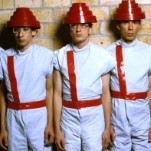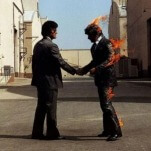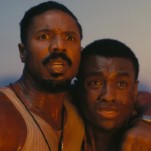Considering the Kitchen of the Present and Future at Smart Kitchen Summit
Photos by Jackie VarrianoIt was a rainy Thursday in Seattle as roughly 250 people gathered at SODO Park, a cavernous building filled with wide, dark beams and well-worn hardwood floors. Its rustic surroundings belied what was to take place, as vendors scurried to set up their wares, readying themselves for the Smart Kitchen Summit.
A banner read “The Kitchen of the Future Has Arrived”, and as the be-suited attendees claimed their seats, the lights adjusted and the first panel began. Curated by Michael Wolf, founder of NextMarket Insights and host of the Smart Home Show podcast, the day was packed with panel discussions featuring innovators and focused around everything from gadgets and integrated home systems to apps and thoughts on the future.
Panelists included Williams-Sonoma president Janet Hayes, Serious Eats managing culinary director J. Kenji Lopez-Alt, Smartplate CEO Anthony Ortiz, and Hiku CEO Rob Katcher. Over the course of 14 panels, a few themes emerged.
First, what is “smart”—and what does that mean for consumers? On one hand, there are ovens that can send you a text message telling you when your food is done. On the other, as Sidechef CEO Kevin Yu said, “The most Googled cooking search is ‘how do I know water is boiling’.” Finding that sweet spot for consumers is not a one-size-fits-all box.
Consumers want products that are smart enough to learn what the individual user wants.
During a panel titled “Smart Kitchen: Starting Point for the Smart Home Consumer,” WeMo’s Peter Taylor said, “consumer expectations around the word “smart” are extremely high,” which touches on the second theme that threaded through the entire day: personalization. Consumers want smart—they want the scale that can help them craft cocktails and the tea system that helps them brew the perfect cup—but they want them to be more than just smart. People want products that are smart enough to learn what the individual user wants.
Companies realize this and are working to tailor experiences. Yu talked about how with Sidechef, the first time a user chops an onion in a recipe with the step-by-step app, there might be a note describing how eyes can tear up. But by the fifth time that user chops an onion, instead of that note they’ll see a link for a video showing a different way to chop the onion. “It’s like a game, as you get better at something, we teach you more,” he said.
In the midst of all this discussion about devices that could monitor the level of milk in your fridge and tell you when you need more (or even add it to your electronic grocery list), there was a lot of talk about the absence of technology for technology’s sake. “Is it easy? Because every step is friction,” said Daniel Rausch when talking about Amazon Dash. These makers realize that if they could make a device that lets a roasting chicken tell the oven it’s cooking too fast or too slow and in turn have the oven tell you, it better not take a user 15 steps to make sure it works right.
-

-

-

-

-

-

-

-

-

-

-

-

-

-

-

-

-

-

-

-

-

-

-

-

-

-

-

-

-

-

-

-

-

-

-

-

-

-

-

-












































